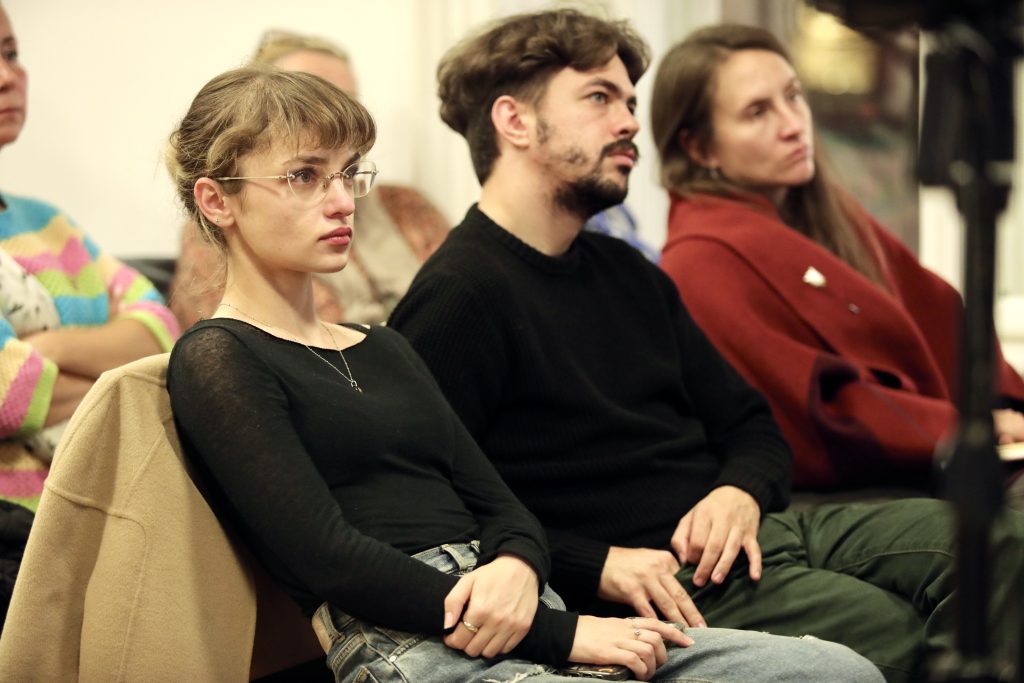The Creased Page of European Art – Lviv School of Photography
Andrij Bojarov
10.10.2024, 18:30
Conference Room of the Center for Urban History, Bohomoltsia 6
We invite you to the second part of Andrij Bojarov's lecture, which continues the accompanying program for the exhibition "Domowroty / ПОВЕРНЕННЯ / Homing. Włodzimierz Puchalski."
The phenomenon of the Lviv school of photography, which was a part of modern European art for a century before the outbreak of World War II, remains little known in Ukraine today.
The rapid development of photographic technology in the nineteenth century in Lviv was in sync with the leading European capitals, especially with Vienna, the capital of the Austro-Hungarian Empire, of which Lviv was a part at the time. The exhibition of the Vienna Camera Club in Lviv in 1900 was a critical, creative impetus for the founder of the modernist school of photography in the city, Henryk Mikolasch. After gaining international recognition, founding the Lviv Photographic Society, and developing his pedagogical and publishing activities, Mikolasch became the head of the Institute or Department of Photography at Lviv Polytechnic in 1921.
Two years later, Józef Świtkowski, a photographer and representative of the pictorialist movement, began teaching photography at the Jan Kazimierz University in Lviv.
During the interwar period, these two schools gave rise to at least several dozen influential authors in photography and visual arts. One of the most distinctive manifestations was the practice of photomontage and photo collage.
However, 1939 and the outbreak of World War II broke off the nascent artistic impulses and, in fact, caused the decline and future breaks with the Lviv School of Photography. This was mainly due to the deaths of some of the school's members, the forced eviction of others, and repressions against those who remained in the city after 1945.
During the lecture, Andrij Bojarov will focus on the history of the Lviv School of Photography and its figures, bringing back the stories and voices of those who lived and worked in Lviv before 1939.
The first part of the lecture will take place on September, 10 at the Municipal Art Center.
The second part of the lecture will take place on October, 10 at the Center for Urban History.
Drawing on the metaphor of "returns," which is particularly sensitive today, the series "Domowroty / ПОВЕРНЕННЯ / Homing" actualizes reflections on the constant process of physical and material return, as well as emotional and intellectual reflections on what is place, belonging, and connection. The public program is part of the project "Homing: Returns of People, Places and Archive." The project is implemented in cooperation with the Goethe-Institut in Ukraine.
The exhibition "Domowroty / ПОВЕРНЕННЯ / Homing" is organized by Andrij Bojarov, Center for Urban History and Lviv Municipal Art Center in partnership with the Consulate General of the Republic of Poland in Lviv and Department of Culture of the Lviv City Council.
Credits
Cover Image: Janina Mierzecka, Reka pracują // 1934 Lwów // ze zbiorów Bibiloteki Narodowej w Warszawie
Gallery 1: Volodymyr Voznyi
Gallery 2: Ira Sereda






















